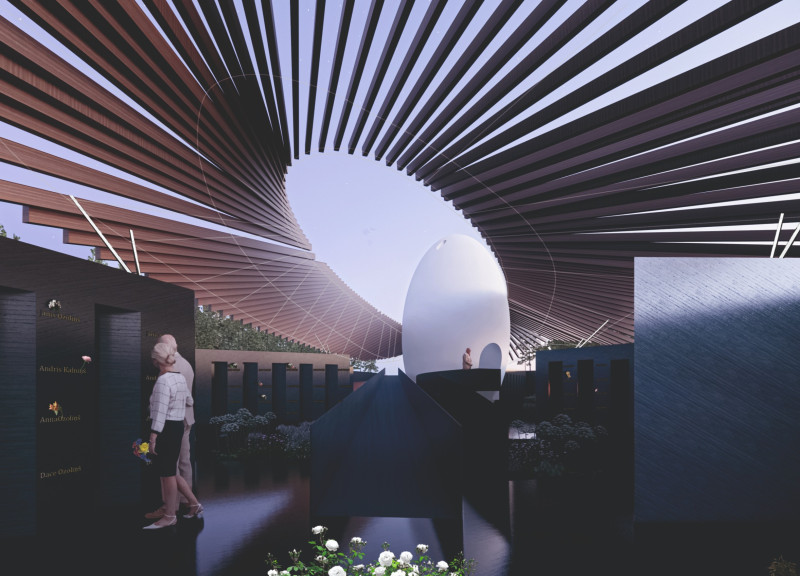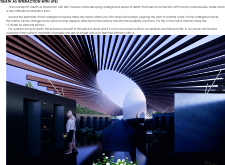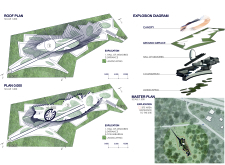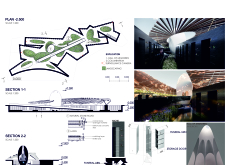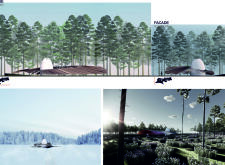5 key facts about this project
The concept behind this project is rooted in the understanding that death is not merely an end but rather an integral part of the life cycle. The architecture is designed to evoke emotions and memories, allowing individuals to honor their loved ones in a tranquil setting. This intention is reflected in the careful selection of materials, spatial arrangements, and overall aesthetic. The use of reinforced concrete and natural stone establishes a grounding presence, while smooth finishes on the interior surfaces enhance the sensory experience, offering a tactile quality that invites touch and reflection.
Key design elements include a series of niches for urn placements, which serve as personalized memorial spaces. These niches are arranged around a central axis leading to an egg-shaped structure, symbolizing the themes of birth and continuity. This spatial organization encourages movement and interaction, as visitors traverse the space, engaging with the memorials and their own memories within a thoughtfully curated environment. The progression through different areas of the project, such as the Hall of Memories, emphasizes the importance of individual experience, allowing for both privacy and communal reflection.
Lighting plays a crucial role in the design, with large openings integrated into the façade. These openings allow natural light to filter into the underground space, creating a harmonious balance between the interior and the external environment. This interplay of light and shadow enhances the contemplative mood and underscores the architectural narrative surrounding life and death. The architectural decisions made regarding the roof design also contribute significantly to the overall ambiance. Characterized by sweeping wooden beams, the roof structure evokes a sense of lightness and shelter, further enriching the emotional landscape.
The landscaping surrounding the project complements the architecture by providing a lush, inviting context. The greenery offers a vibrant contrast to the more understated tones of the built environment, creating a seamless transition between natural and constructed elements. By incorporating flowers and organic forms, the landscape design encourages a sense of renewal and growth, reinforcing the conceptual framework of the project.
The unique approach taken in this architectural design highlights the potential of space to shape human experience during times of grief and reflection. The project does not merely serve as a place for remembrance; it engages visitors in a journey that allows for emotional processing and interaction with the memories of those who have passed. This focus on creating a meaningful relationship between architecture and the users sets the project apart from traditional memorial spaces, making it a compelling example of how design can respond thoughtfully to complex human experiences.
For those interested in a deeper understanding of this architectural endeavor, exploring the architectural plans, sections, and various design elements will provide invaluable insights into the innovative ideas that underpin this project. This analysis only scratches the surface of what the project offers, and readers are encouraged to look further into the architectural designs and conceptual intentions to fully appreciate the rich narrative embedded within the structure.


